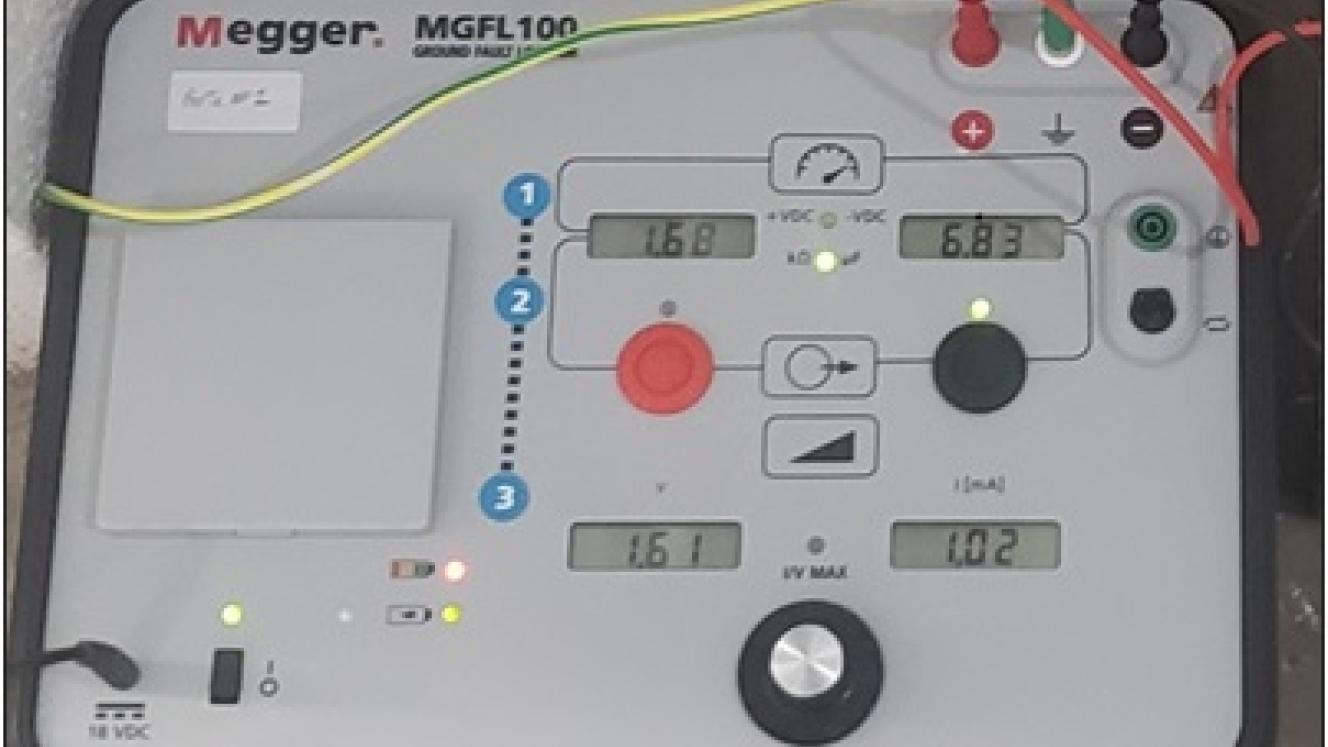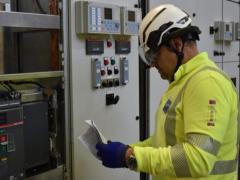Information from Megger
This case study was supplied to Megger by the Tennessee Valley Authority (TVA), located in the southeastern region of the United States.
TVA had a negative ground fault the engineers could not locate. The ground fault was generating an alarm in their distribution substation. They used multiple instruments to trace the fault, including Megger and competitor units. Each unit traced the fault back to the battery charger.
The battery charger was replaced, but the ground fault persisted.
TVA had used the Megger BGFT and a competitor’s unit and traced the fault to the battery charger. They replaced the battery charger, and the fault did not go away.
Megger assisted with the investigation. An operator connected a Megger MGFL100 to the string and it verified the presence of a negative ground fault (Figure 1).

Using the MGFL100, the operator injected current into the circuit and found the resistive value of the ground fault to be about 1,7 kΩ. The MGFL100 also showed the leakage capacitance to be about 7 µF.
Meanwhile, he observed that the current, resistance, and capacitance values were all unstable.
The fault current was present on the negative battery cable. The investigating team performed a tracing exercise and found that there was also a current on the positive bus. Once again, none of these readings were stable.
Knowing that the MGFL100 transmitter outputs a stable low-frequency AC current, the unstable measurement indicated an alternate low-frequency AC presence in the system. After turning off the transmitter, the MGFL100 receiver still measured an AC current on the positive bus, showing that there was AC coupling over the DC.
To locate the source of the AC coupling, the operator placed the receiver in its 50/60 Hz AC mode, a unique feature of the MGFL100. We were then able to trace the 60 Hz current to its source, which was the battery charger. This is why the other tracers failed to locate the real fault. The team isolated the battery charger from the system to remove the AC.
The transmitter was switched on again and could now measure the fault current on the negative bus.
The receiver was then reset to its normal low-frequency tracing mode, and the real fault was traced to a relay. The team removed the ground lead from the relay, and the ground fault vanished.
What complicated the ground fault tracing in this case, was the presence of an AC current that was being coupled over the DC system.
Megger’s MGFL100 transmitter will fluctuate in the presence of low-frequency AC current. Since an operator can place the MGFL100 receiver in a 50/60Hz mode, it allows the operator to trace stray AC currents that may be present on a DC system. So, not only did the operator locate the real ground fault in the relay, but they also discovered a wiring issue in the charger that was coupling AC onto the DC system.
Conclusion
Ground fault tracing is complicated when unforeseen or unknown conditions exist in a system. Having equipment that supplies enough information about the system is critical in determining how to trace a fault. Without this, a fault can be traced all day with no results. Worse yet, the maintenance team could draw the wrong conclusion, wasting time and money.
Outcome
TVA located the real ground fault in the relay, eliminating the alarm in the substation. Plus, they identified a wiring issue in the battery charger that was coupling AC onto the DC system, which could cause further damage and degradation of the DC system.
About the Megger MGFL100
The MGFL100 is a battery ground fault locator. It can locate faults up to 400 kΩ. It can automatically identify real faults as well as leakage currents. The until will alarm when it locates the real fault. The MGLF100 also can trace faults on IT-grounded AC systems. In addition, the MGFL100 receiver can be placed in a 50/60 Hz mode to trace any AC current.













